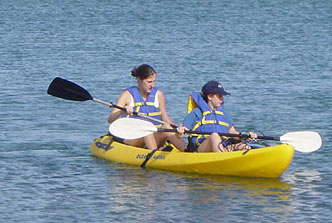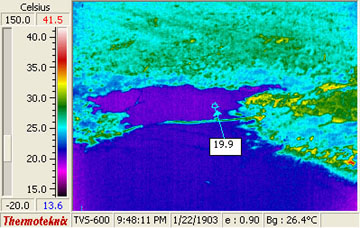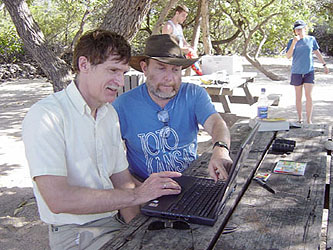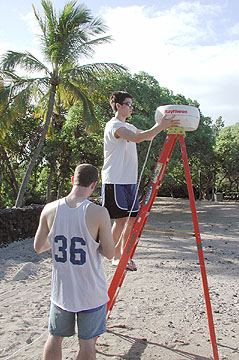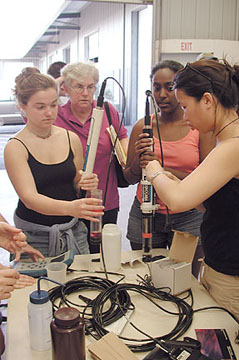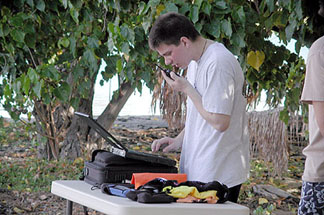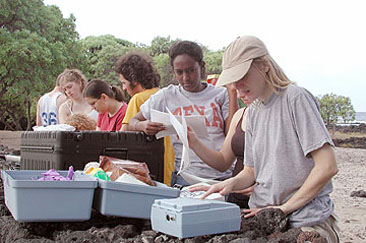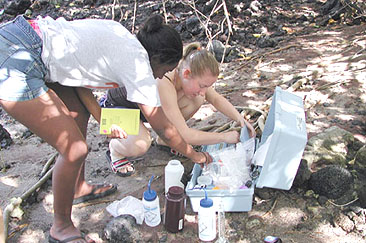We had begun work two
years before on estimating the flux of fresh groundwater into the ocean.
It was a good first try but we decided to return, do a more complete study
and broaden the scope of the research. We wanted to remotely thermal image
the patterns of groundwater discharge into the ocean and ground-truth the
measurements. Groundwater flux from the island could be estimated and used
to calculate how much freshwater is available. This would then lead to development
of strategies for sustainable management of groundwater use.
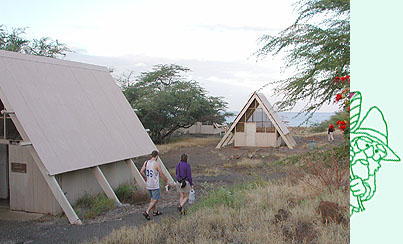 |
| Students
stayed in A-frames at Hapuna Beach State Park. |
We obtained a research
permit from the National Park Service
and worked in Kaloko-Honokahau National
Historical Park. Sallie Beavers, the park ecologist, hosted us and provided
us with staging and storage areas for all our equipment as well as use of
their Trimble GPS. She and her colleagues were extremely helpful. Our
pilot, Harry Hemond, and our FLIR (Forward
Looking InfraRed) cameraman, Don Frankel, flew over our research site in
a Cesna 172. Down below, Kaeo and a few students were braving rough seas
on a 30-foot dive boat to tow a CTD (conductivity, temperature and depth)
meter along the coast and into the embayment. With the plane engine whirring
above, many students trudged along the coastline in knee-deep water to take
conductivity and associated water quality data while other students took
measurements from kayaks.




